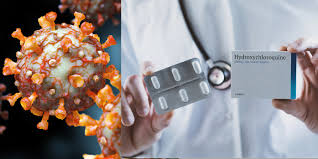HOUSTON : Researchers have used an optical mapping system to demonstrate how the malaria drug hydroxychloroquine, which has been promoted as a potential treatment for COVID-19, creates serious disturbances in the electrical signals that govern heartbeat.
According to the scientists, including those from Georgia Institute of Technology in the US, the findings shed light on how the drug causes serious effects on heart rhythms.
The study, published in the journal Heart Rhythm, found that the drug made it “surprisingly easy” to trigger irregular beats in the heart, or arrhythmias.
In the study, the scientists assessed the effects of the drug in two types of animal hearts, and found that it altered the timing of electrical waves that control heartbeat.
While the findings of animal studies cannot necessarily be generalised to humans, the scientists said the videos they created clearly show how the drug can cause electrical signals in the heart to become dysfunctional.
“We have illustrated experimentally how the drug actually changes the waves in the heart, and how that can initiate an arrhythmia,” said study co-author Flavio Fenton, a professor in the School of Physics at the Georgia Institute of Technology.
“We have demonstrated that with optical mapping, which allows us to see exactly how the waveform is changing. This gives us a visual demonstration of how the drug can alter the wave propagation in the heart,” Fenton said.
According to the researchers, there was an elongation of the T wave — a portion of the heart cycle during which voltages normally dissipate in preparation for the next beat.
They said the drug sets the stage for disturbances in the subsequent heart beat waves, potentially creating an arrhythmia.
Such disturbances, according to the study, can transition to fibrillation which interferes with the heart’s ability to pump.
The ability to easily trigger disturbances known as “long QT” reinforces cautions about using hydroxychloroquine (HCQ) in humans — particularly in those who may have heart damage from COVID-19, cautioned study co-author Shahriar Iravanian, a cardiologist from Emory University Hospital.
According to the scientists, the hearts used in the study are small and very resistant to this form of arrhythmia.
“If we had not seen any HCQ-induced arrhythmias in this model, the results would not have been reassuring. However, in reality, we observed that HCQ readily induced arrhythmia in those hearts,” Iravanian said.
In combination with the clinical reports of sudden death and arrhythmia in COVID-19 patients taking HCQ, he said the findings are very concerning and suggest that the drug should be considered a potentially harmful medication.
Iravanian cautioned that HCQ’s use in COVID-19 patients should be restricted to clinical trial settings.
In the study, the researchers administered HCQ to animal hearts — one from a guinea pig and one from a rabbit — while quantifying wave patterns changing across the hearts using a high-powered, LED-based optical mapping system.
They used voltage-sensitive fluorescent dyes to make the electrical waves visible as they moved across the surface of the hearts.
“HCQ shifts the wavelengths to larger values, and when we quantified the dispersion of the electrical current in portions of the heart, we saw the extension of the voltage across the tissue,” said Ilija Uzelac, another co-author of the study from Georgia Institute of Technology.
He said the change was very dramatic comparing the waveforms in the heart with and without the HCQ.
In a normal heartbeat, the researchers said, an electrical wave is generated in specialised cells of the heart’s upper chamber, the right atrium.
The wave propagates through the entire atria and then to the ventricles, the study noted.
As the wave moves through the heart, the researchers said, the electrical potential created causes calcium ions to be released, stimulating contraction of the heart muscle in a coordinated pattern.
They said drugs like HCQ modify the properties of these ion channels, and inhibit the flow of potassium currents, which prolongs the length of the electrical waves and creates spatial variations in their properties.
Ultimately, that can lead to the development of dangerously rapid and dysfunctional heart rhythms, the scientists noted in the study.
In the worst case, there are multiple waves going in different directions, they said, adding that every section of the heart is contracting at a different time, so the heart is just quivering.
“At that point, it can no longer pump blood throughout the body,” Fenton said.
Patients taking HCQ for diseases such as lupus and rheumatoid arthritis rarely suffer from arrythmia since the doses they take are smaller than those being recommended for COVID-19 patients, Iravanian said.
According to the scientists, COVID-19 patients are different and are at a much higher risk of HCQ-induced arrhythmia.
“Not only is the proposed dose of HCQ for COVID-19 patients two to three times the usual dose, but COVID-19 has effects on the heart and lowers potassium levels, further increasing the risk of arrythmias,” Iravanian added. (AGENCIES)
Trending Now
E-Paper


